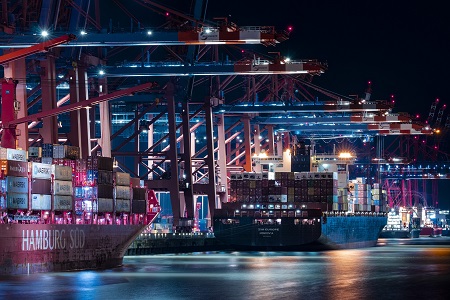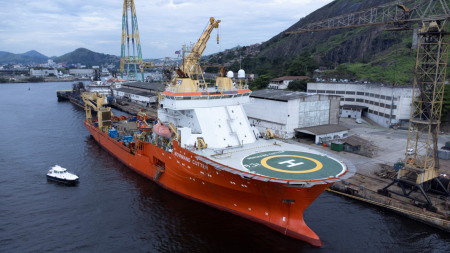Josh Brazil, Director of Supply Chain Insights at project44 said, “In January there were signs of improving conditions at some ports, however, we still have a ways to go before there is a return to ‘normalcy’. Whether or not there will be enough empty containers positioned in the right locations after the Lunar New Year is a big unknown right now. If they are not, we may see further delays. The Omicron variant of COVID-19 continues to impact port workers and other supply chain stakeholders. This will continue to impact supply chain operations around the world and will be a major contributor to delays.”
Definitions of terms used in this report
● Ship Berth Time: The total time in days that ships spend inside the port (at berth) working to offload import containers and load export containers
● Port Congestion: The number of days that ships wait outside the port (at anchor) waiting to get a berth inside the port to start off load import containers and load export containers
● Container Dwell Time: The number of days that it takes for full import containers to be cleared and moved out of the port/terminal and for full export containers that are received at the port/terminal to be loaded on the ship
● TEU Capacity/Shipping Capacity: The nominal carrying capacity of a ship measured in Twenty Equivalent Unit (TEU) deployed by carriers on various shipping routes
● Cut and Run: Is a term used when ships start cargo operations in the port but have to stop the operations and sail due to previous delays or expected delays in order to ensure that they stick to the schedule
Port congestions have shifted to Asian ports
January 2022 saw a reduction in port congestion in the US West and East Coast ports as workers cleared a substantial backlog amid COVID outbreaks among port workers according to publications Courthouse News and Savannah CEO.
While there was some easement at US ports, including Los Angeles and Long Beach, congestion shifted to Asian ports.
According to project44 intelligence, the number of days that ships were waiting to berth at US ports, on average, fell from 14.1 days in December to 7.4 days in January. European ports also noted a month-to-month average decline from 6.5 days in December to 5.6 days in January.
However, from December to January, Asian ports, on average, recorded an increase from 13 days to 16.7 days.
Of the Asian ports, Hong Kong recorded the biggest increase, from an average of 17.5 days in December to 22.5 days in January.
This increase in congestion has been attributed to new COVID outbreaks in Asia and specifically in China. According to a Maersk news update, despite COVID cases, container loading and discharge operations at ports and terminals have been working normally at the ports of Ningbo, Tianjin, Shenzhen, Dalian, and Guangzhou. However, the district-level lockdowns and mass testing led to warehouse closures and trucker shortages.
In Ningbo, for example, a cluster of COVID cases in early January in the city’s Beilun district led to extensive trucker delays as drivers had to undergo testing and quarantine before being allowed into Beilun’s three container terminals.
In Shenzhen, there were gate entry restrictions at the city’s Shekou terminal as health officials carried out testing after cases in Shenzhen.
To read more exclusive features and latest news please see our February issue here.
Media contact
Rebecca Morpeth Spayne,
Editor, International Trade Magazine
Tel: +44 (0) 1622 823 922
Email: editor@intrademagazine.com








